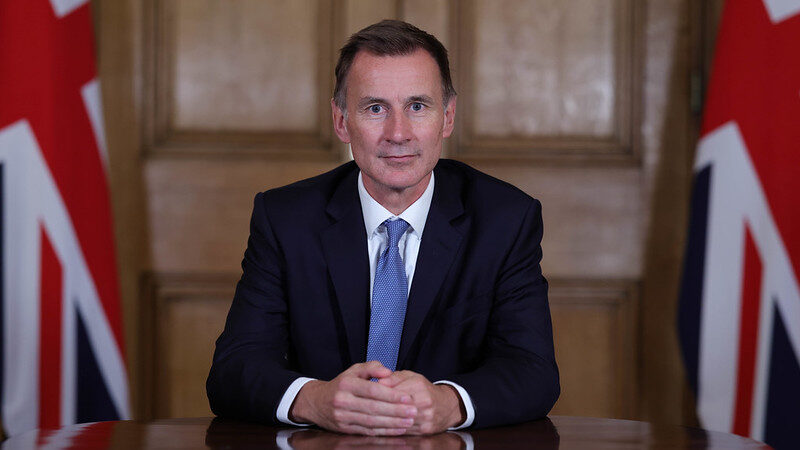“With more than one million vacancies and UK parents facing some of the highest childcare costs in the OECD, we need to see immediate action to urgently solve the labour challenge,” said former CBI director-general, Tony Danker last month.
“Without it, businesses are left trying to grow, invest and become more productive with one hand tied behind their backs.”
Dubbed the “back-to-work budget” by the chancellor himself, Jeremy Hunt said a “lack of skills, a disability or health condition, or having been out of the jobs market for an extended period of time” is preventing people from working.
The plans laid out in his budget hope to: “plug the skills gaps and give people the qualifications, support and incentives they need to get into work”.
But is that the whole story? Here’s what’s included in the budget, and whether the experts think it’s on the money.
What is in the budget about childcare?
The cost of childcare is now so high in Britain that some parents are leaving their jobs, saying it’s more cost effective for one parent to stay at home with the kids than have both parents working while paying childcare fees.
Advertising helps fund Big Issue’s mission to end poverty
The government has said it will increase the maximum universal credit childcare allowance – which has been frozen at £646 a month per child for years – by several hundreds of pounds the BBC reports, but with the exact amount expected to be revealed in the Spring Statement.
To help parents on the lowest incomes stay in work, the government plans to pay childcare costs for those receiving universal credit. The current system requires parents to pay the fees upfront, then claim the money back, which leaves them at risk of falling into debt.
The move has been welcomed by experts including Torsten Bell, chief executive at think-tank Resolution Foundation who said the policy would remove “a cash flow barrier to some entering work.”
What’s in the budget for unemployed over-50s and young people?
The government is targeting over-50s in its mission to fill the more than 1 million job vacancies ailing the economy.
Jeremy Hunt has personally implored those who have taken early retirement to return to work, though the Resolution Foundation has highlighted that many of those who took earlier retirement were higher-paid professionals who own their home so may lack a financial incentive to work.
The “midlife MOT”, a government service that helps people to assess their financial situation, may be expanded, The Telegraph reports, while tax incentives could sweeten the deal.
Advertising helps fund Big Issue’s mission to end poverty
“Skills bootcamps”, run in partnership with local employers, could also be rolled out to teach older people the skills needed to work in the construction and technology industries that are desperate to hire.
But while much of the government’s strategy is focused on older people, the CIPD, the professional body for HR and people development, says that with more people aged 16 to 24 who are not working, but would like to work, than there are people aged 50-64, it’s young people’s careers that should be focused on.
Jon Boys, senior labour market economist for the CIPD, said a renewed focus on creating more flexible, high-quality and productive jobs across the economy would support all ages into work, while investment in careers advice services and boosting apprenticeship opportunities would particularly help young people.
What’s in the budget for those out of work on long-term sick?
In the Health and Disability White Paper, set to be published on Budget Day, the government will lay out its intention to scrap the Work Capability Assessment which decides someone’s eligibility for sickness benefit and capacity to work.
This means claimants will continue to receive the payments when they move into work, without fear of being assessed and losing the benefit.
“Scrapping the work capability assessment will be welcome if it means an end to assessments that cause anxiety instead of helping people achieve their aspirations,” said the TUC’s Paul Nowak.
Advertising helps fund Big Issue’s mission to end poverty
However the change, called “the biggest reform of disability benefits in a decade” by Torsten Bell at the Resolution Foundation, will take “years to implement”.
“The goal of avoiding labelling some people as unable to work is valuable, but no-one should pretend this reform is easy”, Bell continued.
“Alongside winners who keep higher benefits for longer, there risks being significant losers who are too ill to work but don’t have a longer lasting disability – for example, because they are recovering after an operation.”
Get the latest news and insight into how the Big Issue magazine is made by signing up for the Inside Big Issue newsletter
You can’t be sick unless a doctor says so, right? The government is also considering reforming how GPs issue sick notes, according to The Telegraph, in an effort to reduce the number of people signed off sick.
Doctors would be encouraged to focus on what work a person can do, and recommend they pursue a job suitable to their health needs rather than drop out of work entirely.
Advertising helps fund Big Issue’s mission to end poverty
Will public sector workers get a big (enough) pay rise?
Ongoing national strikes – including a mega strike to coincide with Budget day – have mounted pressure on the government to increase public sector pay, as health workers and teachers say they are struggling to pay their own bills and operate essential services while chronically understaffed.
“If we want a stronger economy, we need stronger public services,” said Paul Nowak, general secretary of the Trades Union Congress.
“Our public services need investment too, so that people are not kept out of work because they are on a long waiting list for NHS treatment, or because they cannot access the training they need,” he continued.
In response to these demands, the government has said a 3.5 per cent pay rise next year is affordable and could be on the table.
Big Issue Group has created the person-centred recruitment service,Big Issue Recruitto support people facing barriers to employment into sustainable jobs. To find out how Big Issue Recruit could help you into employment, or help your business to take a more inclusive approach to recruitment, clickhere.









